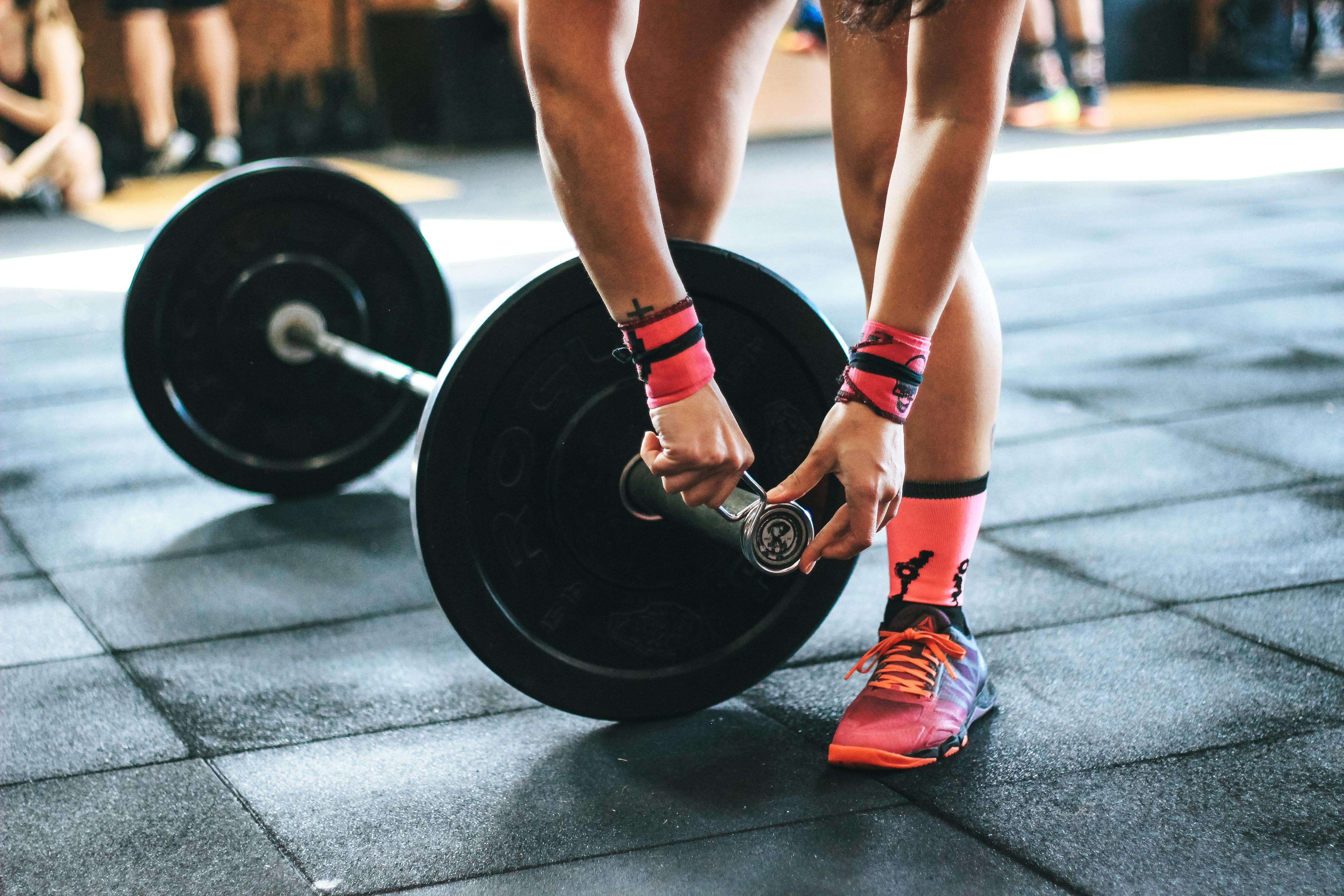How To Wear Weight Belt

Weight belts are an important piece of equipment for any weightlifter or powerlifter. They provide stability and support to the lower back, helping to improve posture and reduce the chances of injury. Wearing a weight belt correctly is essential for optimal safety and performance. This guide will help you learn how to wear a weight belt correctly and safely.When it comes to selecting the right weight belt, there are several factors to consider. The most important is the size and fit of the belt. It should be snug enough to provide support, but not so tight that it restricts your breathing or inhibits your movement.
The type of material used in the belt is also important. Leather is generally considered to be the best option for a weight belt as it is more durable and comfortable than synthetic materials. However, if you are looking for a lower-cost option, synthetic belts can still provide adequate support and comfort.
It is also important to ensure that the belt has sufficient padding. This will help protect your spine from injury when lifting heavy weights. If you are a beginner, you may want to select a belt with extra padding for additional comfort and protection.
Finally, make sure that you select a weight belt with adjustable straps so that you can customize it for your body type and size. This will ensure optimal fit and support while lifting weights.
How to Put on a Weight Belt
A weight belt is an important piece of equipment for anyone who is serious about strength training. It helps to keep your spine and abdominal muscles in proper alignment during heavy lifting, as well as providing extra support for your back. Knowing how to put on a weight belt correctly is essential for safe and effective workouts.
The first step in putting on a weight belt is to make sure that it fits properly. The belt should be snug, but not too tight, and should not pinch or rub uncomfortably against your skin. Once you have the correct fit, you can begin to put the belt on.
Start by positioning the belt around your waist so that the buckle is at the front and the tongue is facing towards your left side. Take hold of both ends of the belt and bring them around your waist while sliding them through the buckle. Make sure that the buckle is securely fastened and then tighten accordingly.
You can adjust your weight belt throughout your workout if necessary, however it should always be snug enough that it supports your spine and abdominal muscles without being too tight or restrictive. After each set, take a moment to check that it’s still in place properly and adjust accordingly if needed.
When taking off a weight belt, you should always unbuckle it first before removing it from around your waist. This will ensure that you don’t accidentally pinch yourself or pull on any sensitive areas of skin when taking off the belt. After each use, wipe down the inside of the belt with a damp cloth or towel to remove any sweat or grime that may have accumulated during your workout session.
What Are The Benefits Of Wearing A Weight Belt?
Wearing a weight belt can be beneficial for many different types of exercise. Weight belts can help support your lower back and prevent injury while lifting heavy weights. They also help to improve your posture and provide stability while performing exercises. Weight belts can also provide you with additional support during exercises such as squats and deadlifts. This additional support allows you to lift more weight with less effort, which can lead to improved strength gains over time. Additionally, wearing a weight belt may reduce the amount of strain placed on your spinal ligaments, which helps to reduce the risk of injury.
Weight belts are also beneficial for bodybuilders and powerlifters who are looking to maximize their performance in the gym. Wearing a weight belt helps to stabilize your core muscles, which can improve your form when lifting. This can ultimately lead to improved results in the gym, as well as improved safety during intense workouts. Finally, wearing a weight belt may help to increase your confidence in the gym by providing additional support during heavy lifts.
What Are The Risks Of Wearing A Weight Belt?
Wearing a weight belt when lifting weights can provide some additional support and stability, but there are some risks associated with using a weight belt that should be considered. Weight belts can cause excessive strain on the lower back and abdominal muscles, leading to muscle fatigue and potential injury. They can also cause improper form due to the increased support, which can lead to poor posture and an increased risk of injury. Furthermore, if the belt is too tight or if it is used too frequently, it can reduce core stability and therefore decrease overall performance. Finally, wearing a weight belt can lead to a false sense of security when lifting heavy weights, which could put the lifter at greater risk of injury.
Overall, while wearing a weight belt may provide some additional support for your lifts, it’s important to understand the risks associated with using one. If you do decide to use a weight belt when lifting weights, make sure that you are using proper form and that the belt fits correctly. Additionally, don’t rely too heavily on the support provided by the belt; always use caution when attempting heavier lifts.
How To Maintain And Clean Your Weight Belt
Weight belts are an important piece of equipment for a variety of sports, from diving to powerlifting. It is important to keep your weight belt in good working condition and clean it regularly. Here are some tips for maintaining and cleaning your weight belt:
First, you should inspect your weight belt before each use. Look for signs of damage such as fraying or tears in the material. Check all the buckles and straps to make sure they are secure and not loose. Make sure that all the hardware is in good condition, with no rust or corrosion.
To clean your weight belt, start by removing any dirt or debris from it with a damp cloth. If there are any stains on the material, you can use a mild soap solution to gently scrub them away. Rinse the belt with clean water and leave it to dry completely before using again.
It is also important to store your weight belt properly when not in use. Hang it up in a cool, dry place out of direct sunlight so that it does not become damaged due to heat or humidity. You should also make sure that the straps and buckles are loosened before storing so they don’t get stuck together over time.
Finally, if your weight belt has been exposed to saltwater, it is important to rinse it off with fresh water after each use. This will help prevent corrosion and rusting of the metal hardware on the belt. You can also apply a light coat of oil or wax to protect against further damage from saltwater exposure.
By following these tips, you can ensure that your weight belt remains in good working condition for many years to come!

What Not To Do When Wearing A Weight Belt
Wearing a weight belt is an important part of any weightlifting routine, as it can help to stabilize your lower back and protect it from injury. However, there are certain things you should avoid when using a weight belt. Firstly, you should never use it to lift weights beyond your natural capabilities. Trying to lift too much too soon can cause serious injury, so make sure you increase the weights gradually and within your own limits. Secondly, you should never wear a weight belt during aerobic activities such as running or cycling, as this could cause some serious damage to your back. Lastly, you should never wear a weight belt for long periods of time – this could lead to muscle imbalances and poor posture over time.
It is also important to make sure that the weight belt fits properly – it should be tight enough that it doesn’t move around on your body but loose enough that it doesn’t constrict your breathing or circulation. Make sure that the belt is made of high-quality material that will last for a long time and provide adequate support for your back while lifting weights. Finally, make sure you always take off the belt after each workout session – this will prevent any potential skin irritation from occurring.
By following these simple tips when using a weight belt, you can ensure maximum safety and comfort while lifting weights. Remember to always start with lighter weights until you feel comfortable with heavier ones and never push yourself too far beyond your natural limits.
Weight Belt Exercises
Weight belts are an essential tool for weightlifting and other strength-based exercises. Wearing a weight belt allows you to lift heavier weights, increase your stability and posture, and reduce the risk of injury. There are a variety of exercises that can be done with a weight belt, ranging from basic lifts like squats and deadlifts to more complex movements such as snatches and cleans. For example, squats can be performed with a weight belt to increase the intensity of an exercise while improving form and stability. Deadlifts can also be done with a weight belt to help maintain proper form and reduce back strain.
In addition to squats and deadlifts, Olympic lifts such as the snatch and clean can also be performed with a weight belt. These lifts require explosive power combined with good technique in order to maximize their effectiveness. A weight belt helps to stabilize the body during these dynamic movements so that you can lift more weight safely. It also helps keep your back in proper alignment, which is essential when performing these types of lifts.
Finally, another popular exercise that can be done with a weight belt is the bent-over row. This exercise works your entire back muscle group along with your biceps and forearms. The weight belt provides extra support to your lower back when performing this exercise, which helps reduce strain on your spine while increasing the amount of weight you can lift safely.
In conclusion, there are many exercises that can be done with a weight belt in order to increase strength, power, stability, and performance while reducing the risk of injury. Whether you are looking for basic lifts like squats or complex exercises like Olympic lifts or bent-over rows, using a weight belt will help you get more out of every workout session.
Should You Wear A Weight Belt Every Day?
Weightlifting belts are an important piece of equipment for anyone who is serious about weightlifting. They provide extra support to the lower back and abdomen, which helps to protect against injury while lifting heavy weights. However, while wearing a weight belt can be beneficial, it’s important to know when and how to use one properly. Wearing a weight belt every day is not recommended; instead, use it only during specific exercises that require extra support in the lower back and abdominal region.
When you are doing exercises that involve heavy lifting, such as squats or deadlifts, a weight belt can help provide extra stability in your core area. This helps reduce the risk of injury and can also increase the amount of weight you can safely lift. Keep in mind that even with a weight belt on, proper form is still important; using good technique will help ensure that you are lifting safely and efficiently.
In addition to being used for heavy lifts, a weight belt can also be used for other types of exercise such as abdominal work or even just general fitness activities like walking or jogging. It’s important to remember that while the belt may offer some additional support, it should still not be worn all day long as this could potentially cause issues with your posture or lead to discomfort over time.
While wearing a weight belt can offer additional support during specific exercises, it’s important not to rely too heavily on the belt and to make sure you are using proper form when lifting weights. When used correctly and with moderation, a weight belt can be an effective tool in helping you reach your fitness goals safely and efficiently.

Conclusion
Weight belts are a great addition to any workout routine. They can help you lift heavier weights, improve your posture, and protect your back from injury. However, it’s important to be mindful of how you wear your weight belt and to adjust it accordingly. Make sure that the belt is snug enough so that it provides support but not so tight that it restricts your breathing or causes discomfort. Before lifting heavy weights, take a few minutes to adjust the belt for maximum comfort and stability.
At the end of the day, whether or not you choose to wear a weight belt is entirely up to you. However, if you are serious about lifting heavier weights and taking your fitness routine to the next level, using a weight belt can be beneficial in many ways. So don’t be afraid to give it a try!
